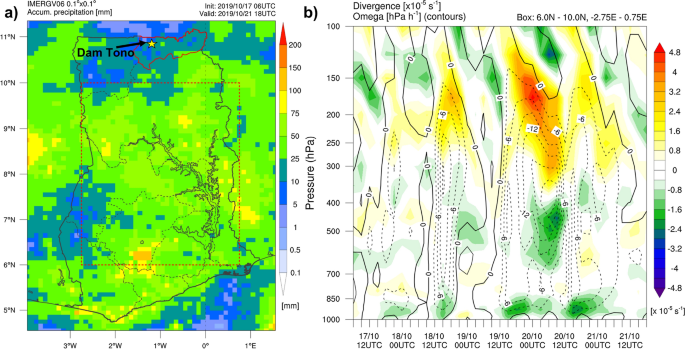Weather Forecasting: A Technological Shield Against Disaster
The Earth’s weather is a elaborate and dynamic phenomenon, pushed via elaborate interactions among the atmosphere, oceans, and land. These interactions can give upward push to severe weather events, from devastating hurricanes and tornadoes to crippling floods and droughts, causing significant destruction and lack of lifestyles. In the face of such unpredictable forces, humanity has lengthy sought methods to expect and practice for these events, employing ever-evolving applied sciences to advantage an edge in opposition t the factors.
From Ancient Observations to Modern Satellites:
Our awareness of weather forecasting has advanced dramatically over centuries. Ancient civilizations trusted simple observations of clouds, wind direction, and animal behavior to foretell the elements. The invention of the barometer in the 17th century marked a big breakthrough, taking into account the dimension of atmospheric pressure, a key indicator of upcoming weather adjustments.
The development of the telegraph within the nineteenth century enabled the fast transmission of weather records across large distances, paving the manner for the established order of countrywide weather facilities. These amenities, utilising floor-based meteorological stations, started issuing everyday weather forecasts and warnings, offering useful recordsdata for communities across the globe.
The dawn of the 20 th century noticed the creation of radiosondes, small instruments carried aloft via weather balloons. These radiosondes provided extreme data on atmospheric stipulations at diverse altitudes, considerably improving the accuracy of weather predictions. However, the actual revolution in weather forecasting came with the advent of satellites.
The Power of Satellites:
Launched in the 1960s, weather satellites supplied a progressive new attitude on Earth’s atmosphere. Orbiting our planet, they captured pics of cloud formations, wind styles, and different atmospheric phenomena, providing a worldwide view of weather platforms. This data, blended with floor-based mostly observations, provided a extra complete awareness of weather patterns, enabling for more precise and long-variety forecasts.
Modern weather satellites, prepared with sophisticated sensors and imaging structures, provide much more special insights into the atmosphere. They can measure temperature, humidity, wind speed, precipitation, and even hint gases like ozone, providing helpful records for monitoring weather phenomena from storms to volcanic eruptions.
Beyond Satellite Data: Numerical Weather Prediction (NWP):
While satellite tv for pc files is invaluable, it is just one piece of the puzzle. To truly predict weather, we need to recognize the physics that govern atmospheric techniques. Enter numerical weather prediction (NWP), a way that uses elaborate mathematical versions to simulate the ambience and forecast future climatic conditions.
NWP types are constructed upon essential equations of fluid dynamics and thermodynamics, incorporating great quantities of information from satellites, ground stations, and other assets. These types run on powerful supercomputers, performing billions of calculations to simulate atmospheric processes. By running these models forward in time, scientists can undertaking future weather patterns, offering predictions for hours, days, and even weeks beforehand.
Advanced Technologies for Enhanced Forecasting:
The quest for more accurate and timely weather forecasts maintains, driven by the must mitigate the dangers associated with extreme weather events. Recent advancements in technological know-how are pushing the limits of weather forecasting, providing new tools and tactics to improve our knowledge of atmospheric processes:
1. Doppler Radar:
Doppler radar uses the Doppler impact to detect and track the motion of precipitation. By analyzing the frequency shift of the radar sign, meteorologists can determine the speed and direction of precipitation, providing valuable information for forecasting thunderstorms, tornadoes, and other extreme weather occasions.
2. High-Resolution Modeling:
NWP models are constantly being multiplied, incorporating more detailed physical processes and using increasingly more successful computers. High-determination models, which simulate weather patterns at smaller scales, enable for more actual forecasting of local weather conditions.
3. Artificial Intelligence (AI):
AI algorithms are gambling an an increasing number of important position in weather forecasting. Machine studying models can analyze big amounts of records, including satellite imagery, radar documents, and historical weather facts, to identify patterns and predict future weather events. AI structures are also getting used to increase the accuracy of NWP models and broaden new processes to forecasting.
4. Climate Modeling:
Climate models are used to look at the long-term changes in Earth’s climate, factoring in factors like greenhouse gas emissions and changes in solar radiation. While weather models don’t predict particular weather occasions, they supply valuable files on long-term developments, permitting higher version to a changing weather.
Weather Forecasting: A Vital Tool for Disaster Mitigation:
The developments in weather forecasting technologies have revolutionized our potential to predict and prepare for severe weather events. Improved forecasting facilitates for more effective disaster mitigation techniques:
1. Timely Warnings and Evacuations:
Accurate weather forecasts supply vital recordsdata for issuing timely warnings to communities at chance. This helps human beings to evacuate from risk zones, decreasing the achievable for casualties and estate harm.
2. Infrastructure Protection:
Forecasting enables for the proactive safety of extreme infrastructure, such as electricity grids, transportation platforms, and communique networks. By anticipating possible damage from storms and floods, preventative measures can be taken to reduce disruption and ensure continuity of essential services.
3. Agricultural Planning:
Weather forecasts are essential for agricultural planning, allowing farmers to make knowledgeable selections approximately planting, harvesting, and irrigation. Accurate predictions can assist to minimize crop losses because of droughts, floods, or extreme temperatures.
4. Public Safety and Emergency Response:
Weather forecasts supply imperative information for public safety groups, enabling them to set up elements successfully in case of emergencies. Accurate predictions enable for green coordination of seek and rescue operations, in addition to the distribution of important components to affected communities.
Challenges and Future Directions:
Despite gigantic development, demanding situations stay in the sector of weather forecasting. Accurately predicting short-term events, akin to extreme thunderstorms and tornadoes, continues to be a prime mission. Further enhancements in high-selection modeling, stepped forward radar systems, and documents assimilation systems are had to decorate the accuracy of these predictions.
The increasing complexity of weather patterns, driven by climate replace, affords another mission. Understanding the have an impact on of climate replace on weather events calls for further research and progression of recent modeling tools and procedures.
Future advancements in weather forecasting will in all likelihood cognizance on:
- Improving the accuracy and determination of NWP models: Incorporating more detailed actual processes and utilizing even more powerful computing elements will result in more precise forecasts.
- Developing new files assimilation techniques: Integrating records from numerous sources, including satellites, radar, and ground stations, will improve the accuracy and reliability of weather predictions.
- Leveraging AI and device studying: AI algorithms will be used to analyze giant amounts of information, recognize patterns, and increase the accuracy of weather forecasts.
- Developing new sensors and statement systems: Advancements in sensor technology will provide a more comprehensive view of the atmosphere, main to extended forecasts.
Conclusion:
Weather forecasting has come a long way considering its early days of easy observations. Today, progressed technologies, from advanced satellites to effectual supercomputers, provide us with remarkable perception into Earth’s weather. This know-how has grow to be necessary for protecting lives and protecting estate from the destructive forces of nature. As we maintain to stand the challenges posed by climate exchange and the increasing complexity of weather patterns, the pursuit of ever-more precise and reliable weather forecasting continues to be a serious undertaking, ensuring our resilience against the elements and safeguarding our future.

